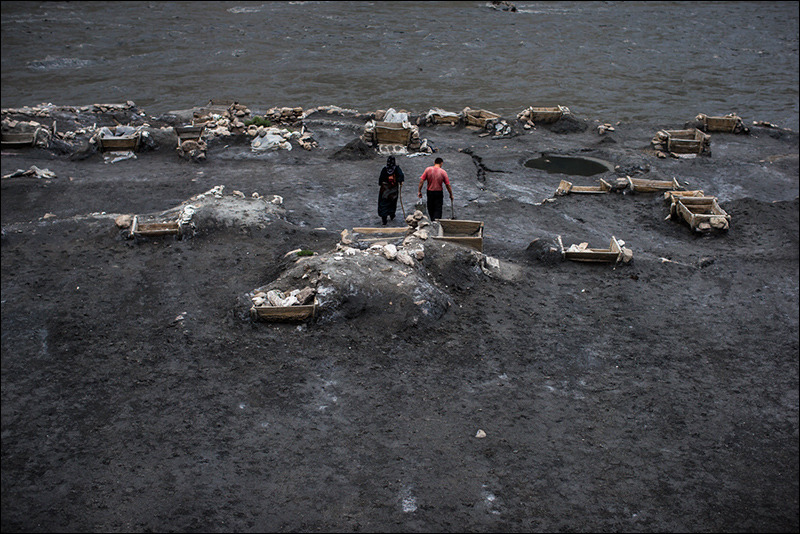
(blog.maxavdeev.com) Hadizhat Shahbanova, 73, and her nephew Izudin Abakarov, 18, extract salt in the village of Kvanhidatli. They are using a technique that has been passed through generations of their family for over six centuries. A few kilometers away from their village there is a saline stream from which they draw water, then pour it onto a lump of loose earth. The earth is then dried, the salt is exuded onto the dried surface of the earth and the process is repeated several times. The salted earth is then spread onto a tray and sprayed with water from the stream again, followed by evaporation over burning twigs and roots (few if any trees grow there). A typical production cycle lasts for a week. If lucky, the family could end up with two sacks of salt in a week. Normally, it’s a sack that one can divide into 80 cans at 100 rubles each (about $3 apiece). Operations are only possible within the dry season that lasts from April to September, mostly July to August. Dagestan, Russia, June 2013.
More photos here: flickr.com











No comments:
Post a Comment